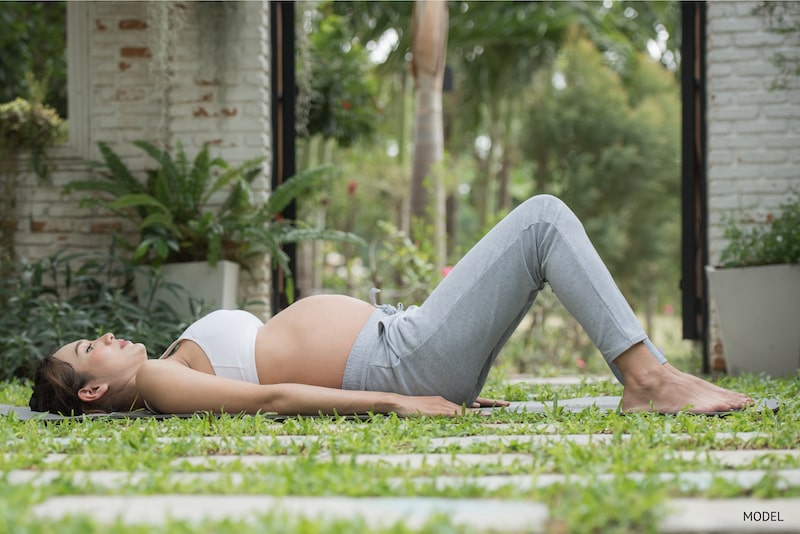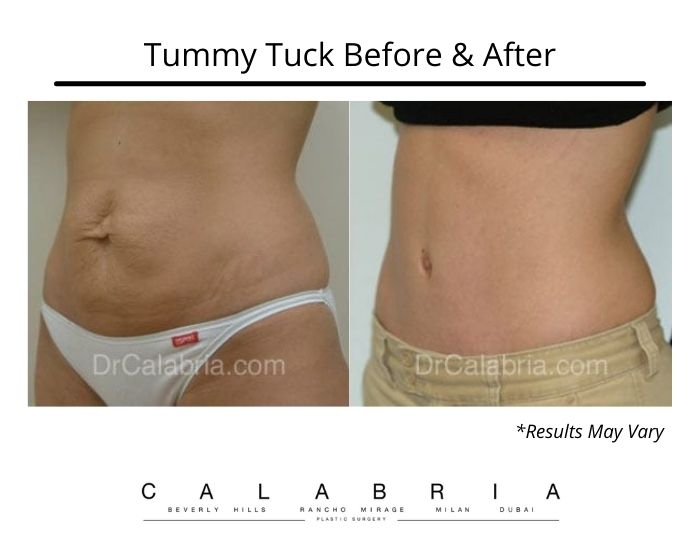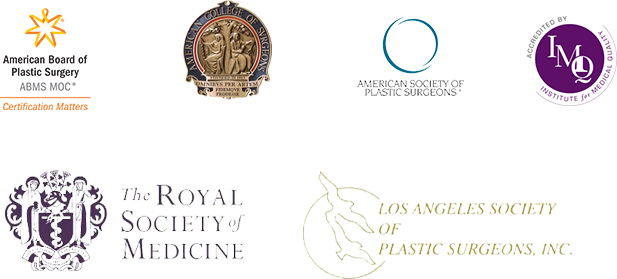Posted in Tummy Tuck (Abdominoplasty)
3 Minute Read:
While a growing belly is a natural part of pregnancy, many women have concerns about how their abdomen will look following childbirth.
The abdominal area is the most affected area following pregnancy, which makes sense as pregnancy stretches the skin and muscles consistently for 40 weeks. It can be difficult—or even impossible—to return the abdomen to its pre-baby form without cosmetic help.

How Can Tummy Tuck Surgery Help With Postpartum Belly Bulge?
What About My C-Section Scars? Can a Tummy Tuck Procedure Address This?
What Is Diastasis Recti?
Diastasis recti is the physical separation of the abdominal muscles. When severe, diastasis recti can only be repaired through surgery, such as a tummy tuck.
During pregnancy, the growing uterus stretches the abdominal muscles, causing the two sides of the rectus abdominis to push away from each other. This separation of the rectus muscles—known as diastasis recti—causes a bulge in the middle of the abdomen, forcing the belly to protrude.
The belly pooch and the excess skin can stick around for a long time following pregnancy, despite your best efforts in maintaining an exercise regime or a healthy diet. Fortunately, a tummy tuck is an option many women seek to have their middle section tightened for a smoother, firmer, and more toned abdominal contour.
How Can Tummy Tuck Surgery Help With Postpartum Belly Bulge?
Tummy tuck surgery is considered the top procedure to eliminate excess abdominal skin and fat from the lower abdomen while tightening the tummy muscles (rectus muscles).
As mentioned earlier, the pressure of a growing baby results in stretched and thinned abdominal muscles, especially for women with smaller builds or those with multiple pregnancies.
A tummy tuck procedure can be used to restore muscle structure by tightening and supporting the abdominal wall. For some patients, the procedure has gone to alleviate secondary issues such as back pain, stress incontinence, or hernia.
During your procedure, your surgeon will close the separation by repositioning the abdominal muscles on the median line and stitching them together to repair the diastasis while helping you achieve a flatter and firmer abdomen. He will also remove excess fat deposits and trim excess abdominal skin.
Dr. Calabria uses a suturing technique when performing tummy tuck surgery. This abdomino-advancing-plasty allows for a more sculpted and smoother abdominal contour while relieving significant tension from the tummy tuck incision.
While many surgeons—including Dr. Calabria—offer variations of the tummy tuck, such as the mini tummy tuck and the full tummy tuck, a full tummy tuck procedure is usually recommended for women with significant abdominal separation as it repairs the muscle and removes a more substantial amount of skin for a natural belly contour.

What About My C-Section Scars? Can a Tummy Tuck Procedure Address This?
Following a Caesarean section, some women struggle with unsightly scars or stretch marks that span across their midsection. Others have tissues overhanging the scar or stretch marks that make them excessively self-aware.
The tummy tuck is one of the most effective plastic surgery procedures that correct the imperfections left behind from pregnancy and childbirth.
Besides sculpting a flatter and firmer abdomen, a tummy tuck can be used as a means for C-section scar revision. The procedure removes the excess skin protruding above the scar and redos the incision to give patients a less noticeable scar that can easily be hidden beneath bikini bottoms.
Interested in Learning More?
If you would like to learn more about how a tummy tuck procedure can help restore your body or see more before-and-after photos, please contact us at 310-777-0069 or fill our online form to schedule a consultation with Dr. Calabria.
